In the current worldwide context of climate emergency we live in, Lost Forest pavilion approaches the reality of forest fires and raises awareness about the importance of coexistence, care and sustainable management of our forest. The project confronts this issue in a very direct and frontal way, transferring a large volume of burned logged trees, coming from a nearby fire, to an urban context in the city of San Sebastián (Basque Country).
Julia Ruiz-Cabello Subiela + Santiago del Águila Lost Forest
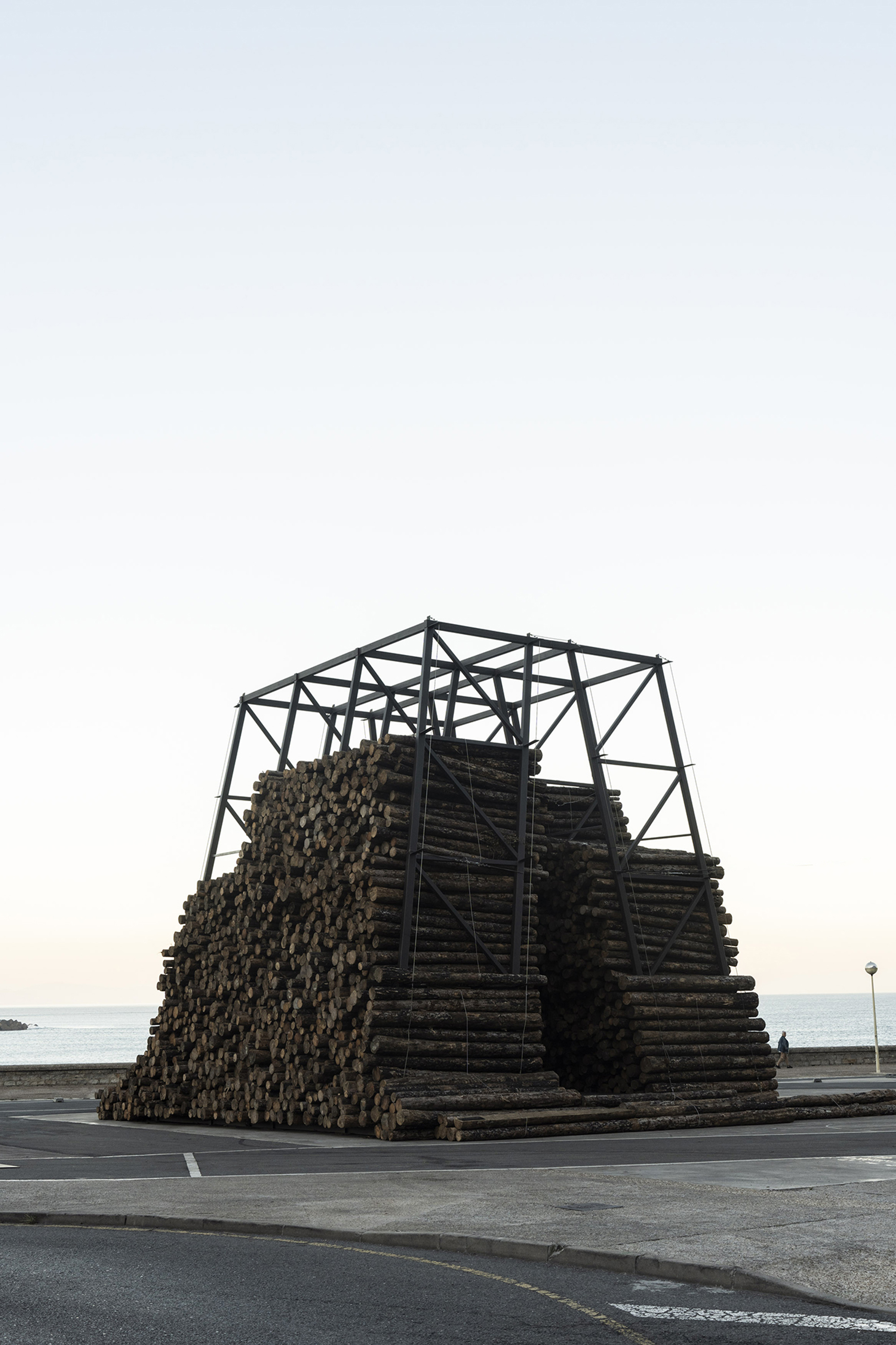
© Mikel Blasco

© Mikel Blasco
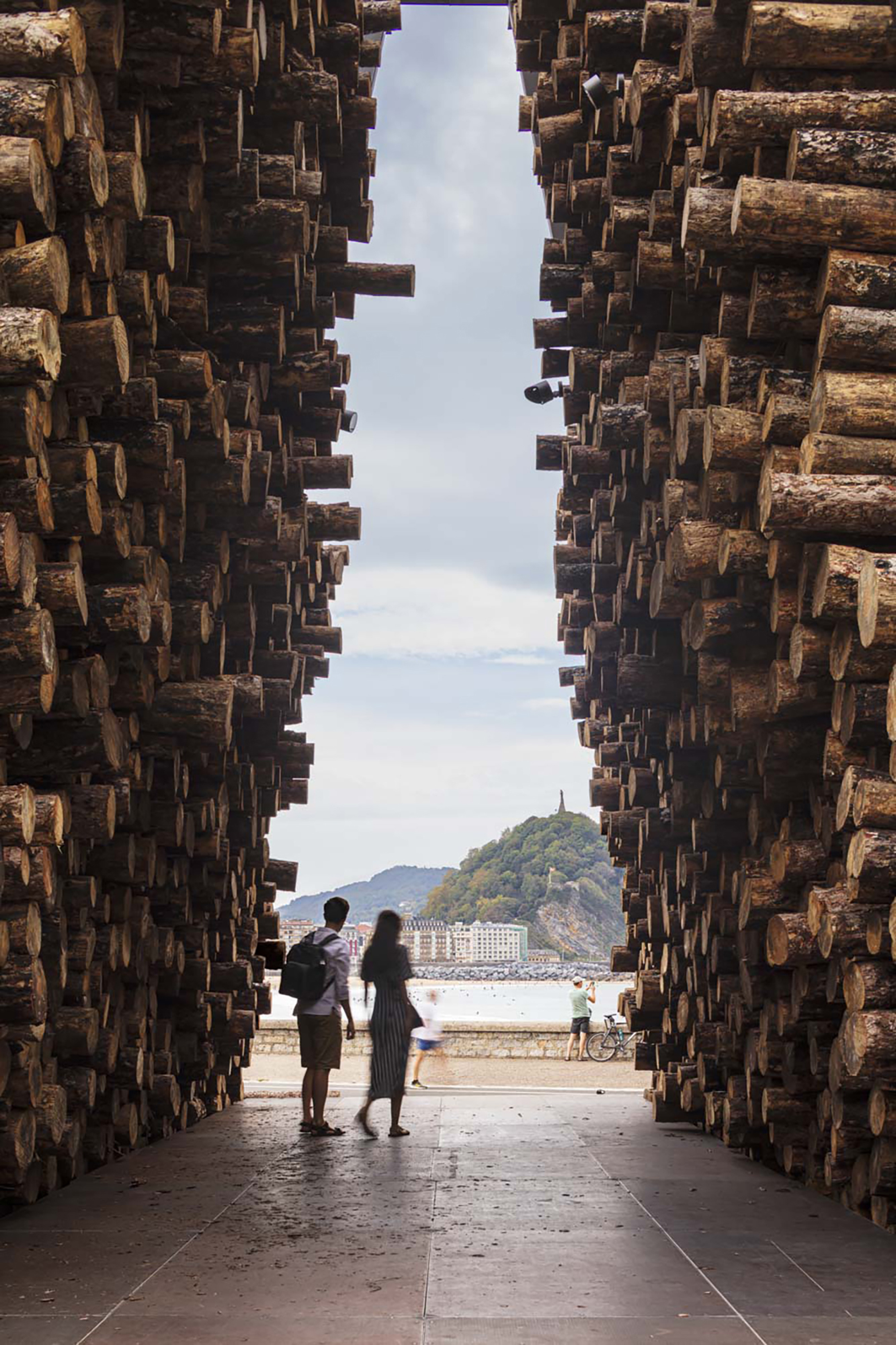
© Adrià Goula
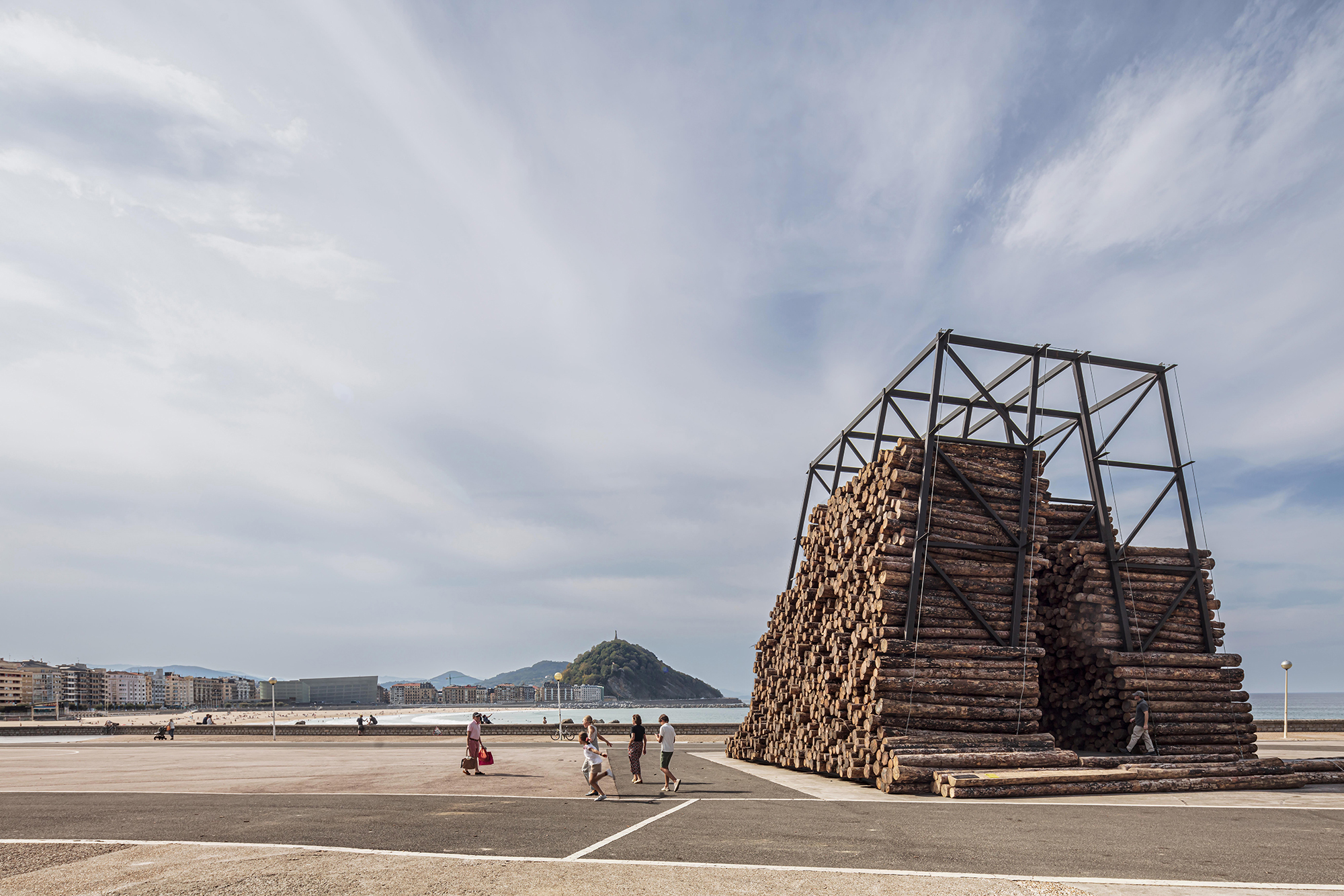
© Adrià Goula
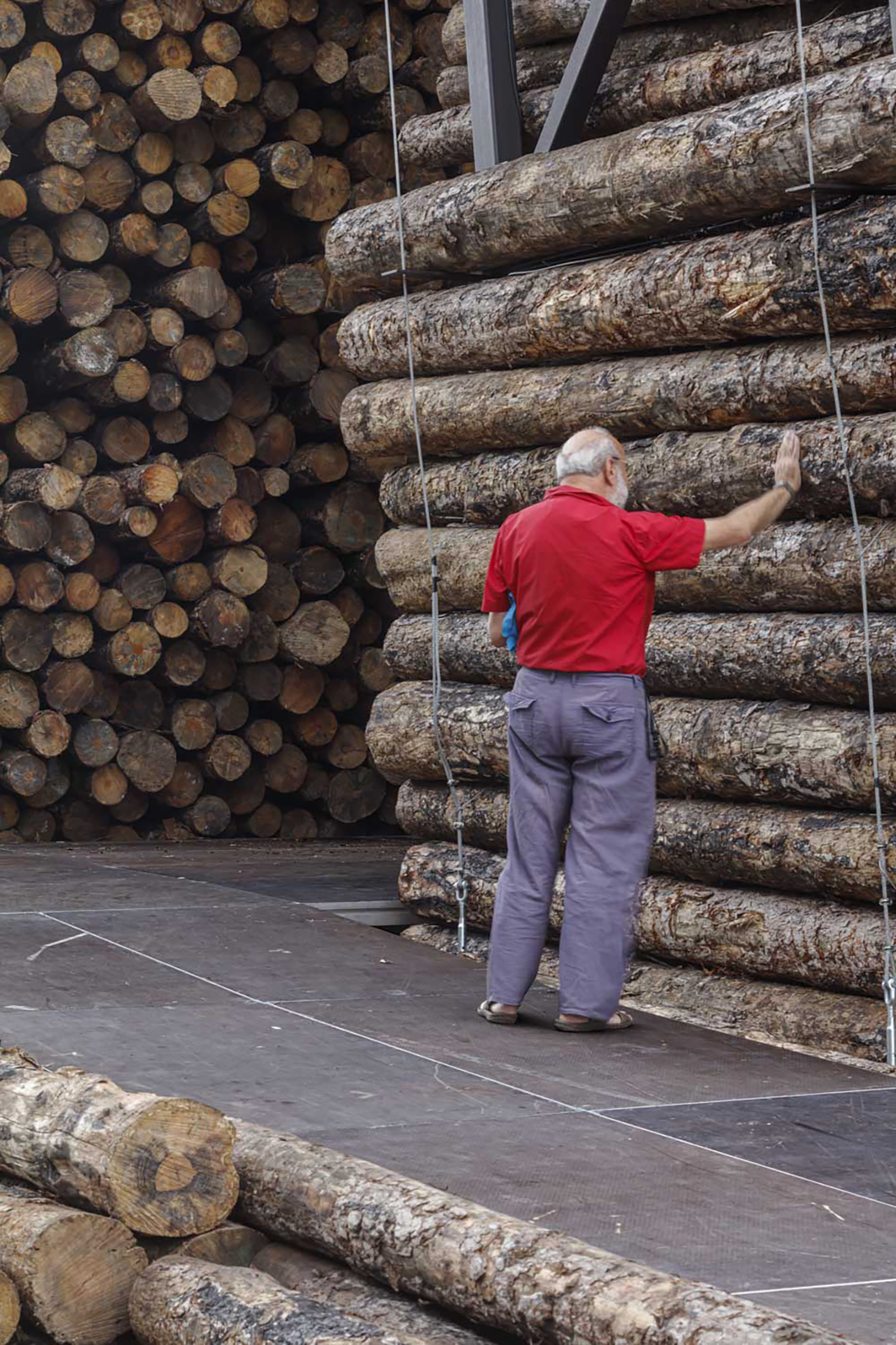
© Adrià Goula
The volume was built with groups of 4m long stacked logs. The species was “pino laricio” (black pine), extracted from one of the eight wildfires that, in June 2022, devastated almost 15,000 hectares in Puente la Reina, Navarra. Maderas Larreta, a local company in charge of exploiting this area, collaborated in the project by lending the whole 1,000 stereos (equivalent to almost 500 tons) of logged wood that shaped the sculpture. The logs, due to their loaned condition, could not be manipulated. All the wood came directly from the forest without going through any prior processing. Once the pavilion was dismantled, the logs continued their path (burned wood still has many industrial uses) and the forest continued its regeneration.
The design concept was to create a transited monument that responded in its dimension to the inconceivable scale of a natural disaster of this kind. In addition to the impact that the project intended to generate due to its magnitude and decontextualization on the urban plaza, it was also intended to create an interior space for contemplation, where the coexistence and sensory experience became very important.

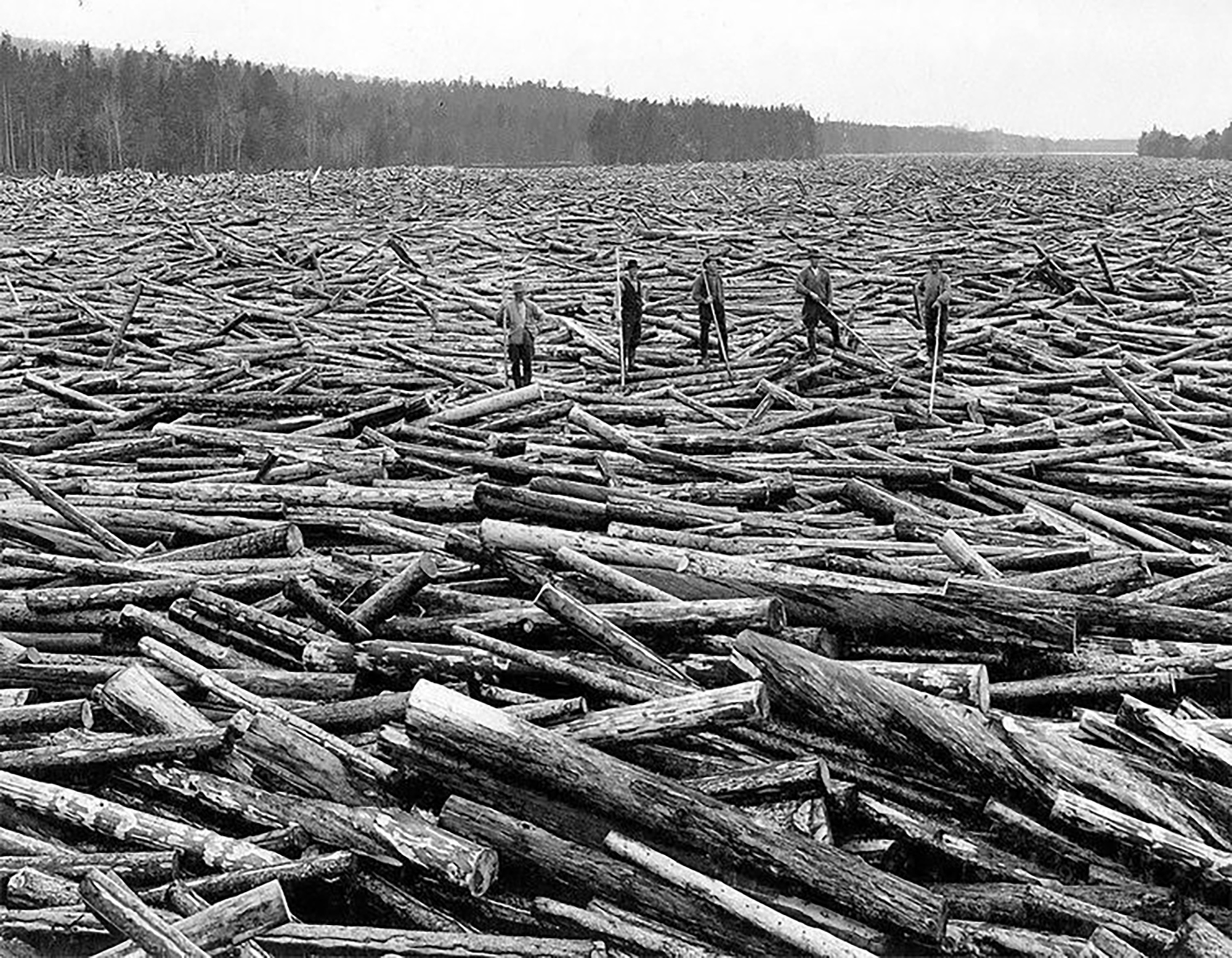
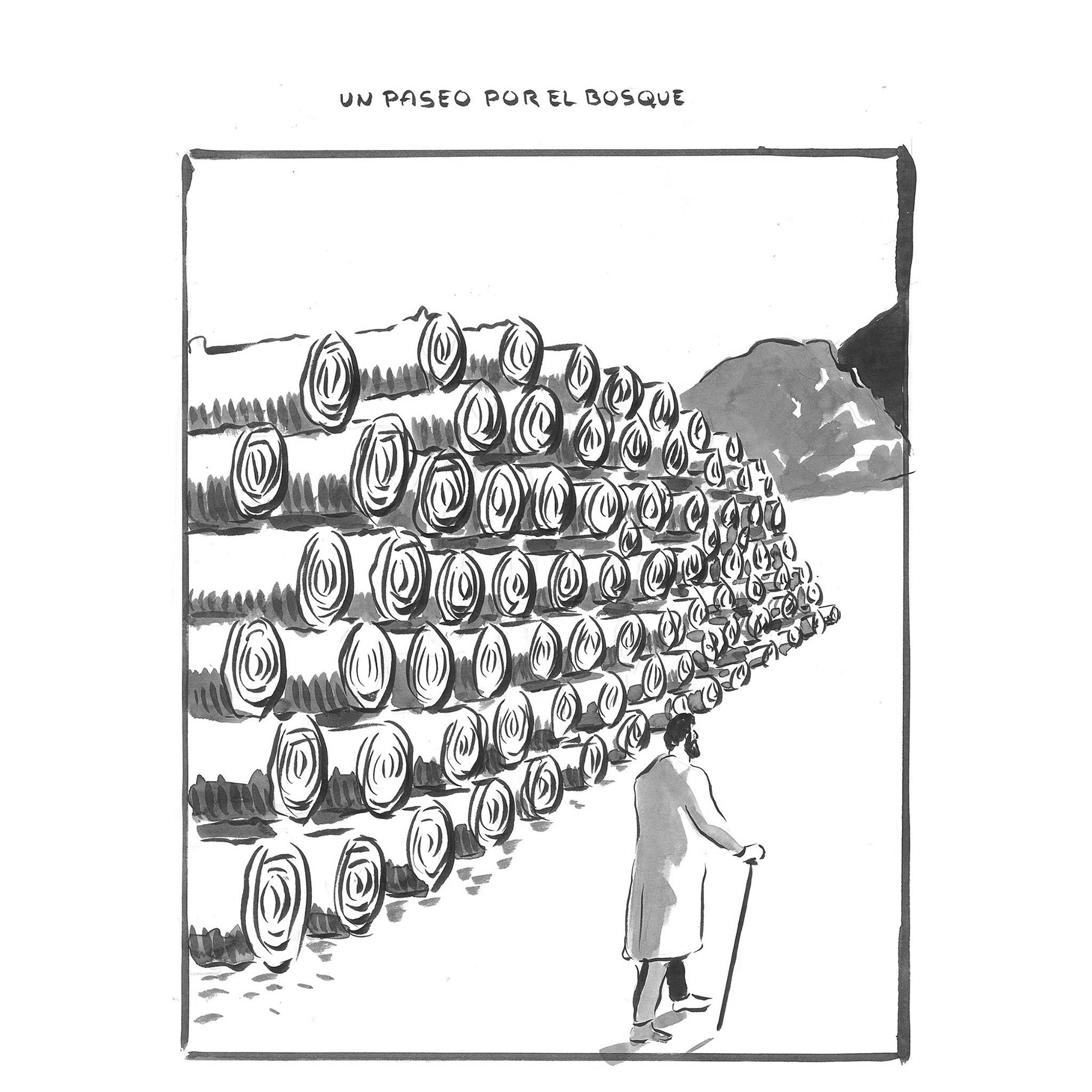
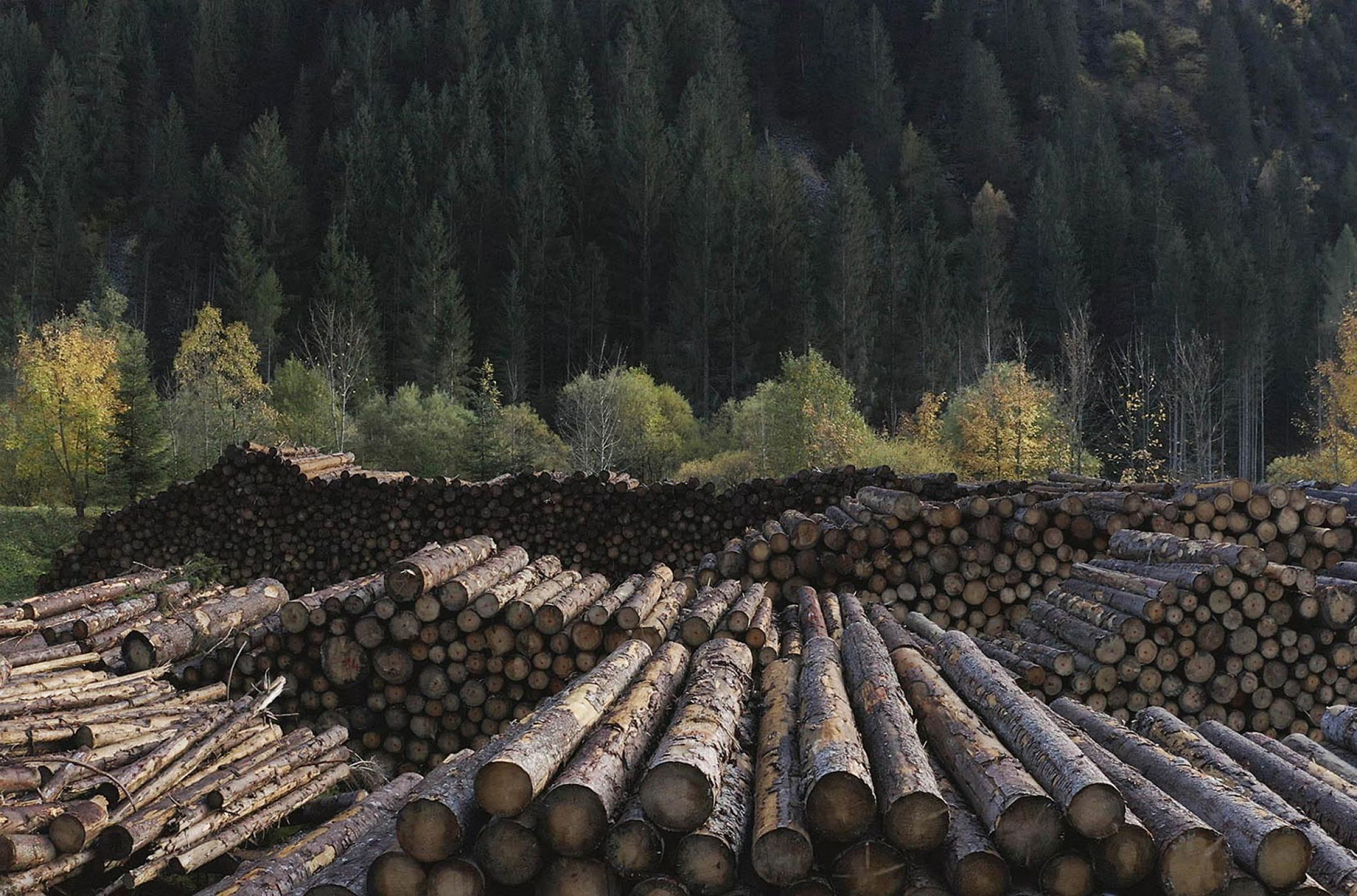
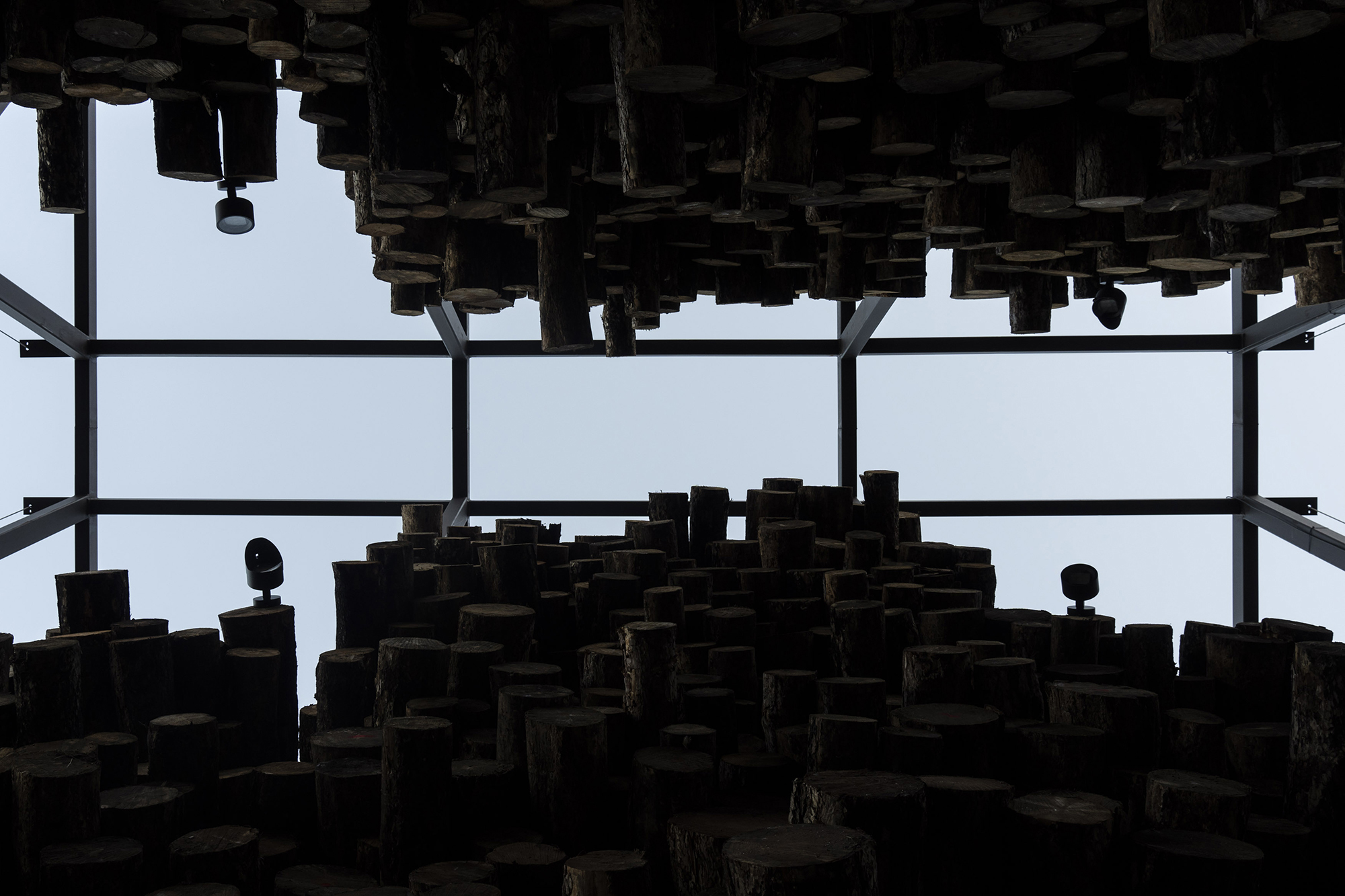
© Mikel Blasco
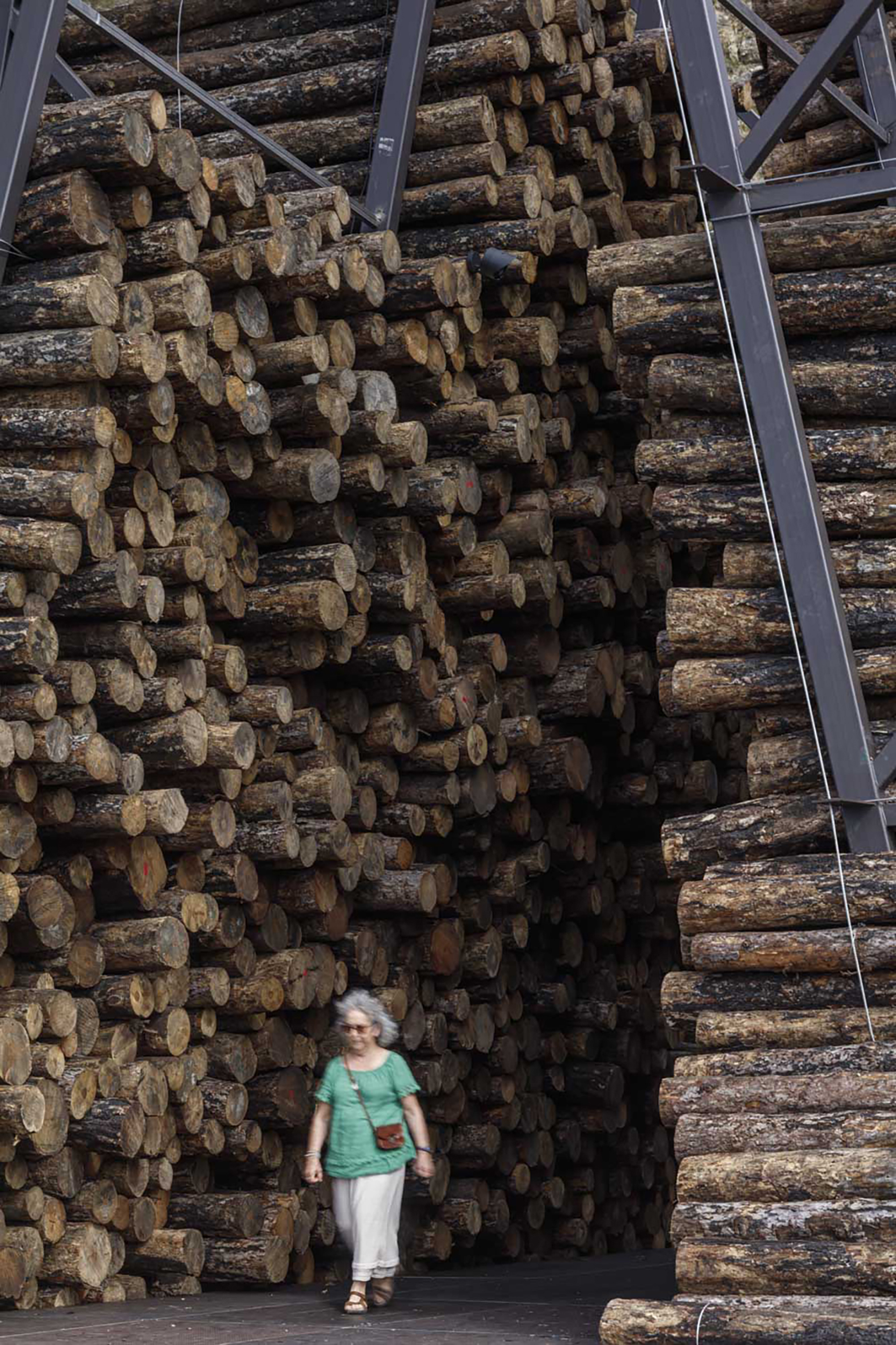
© Adrià Goula
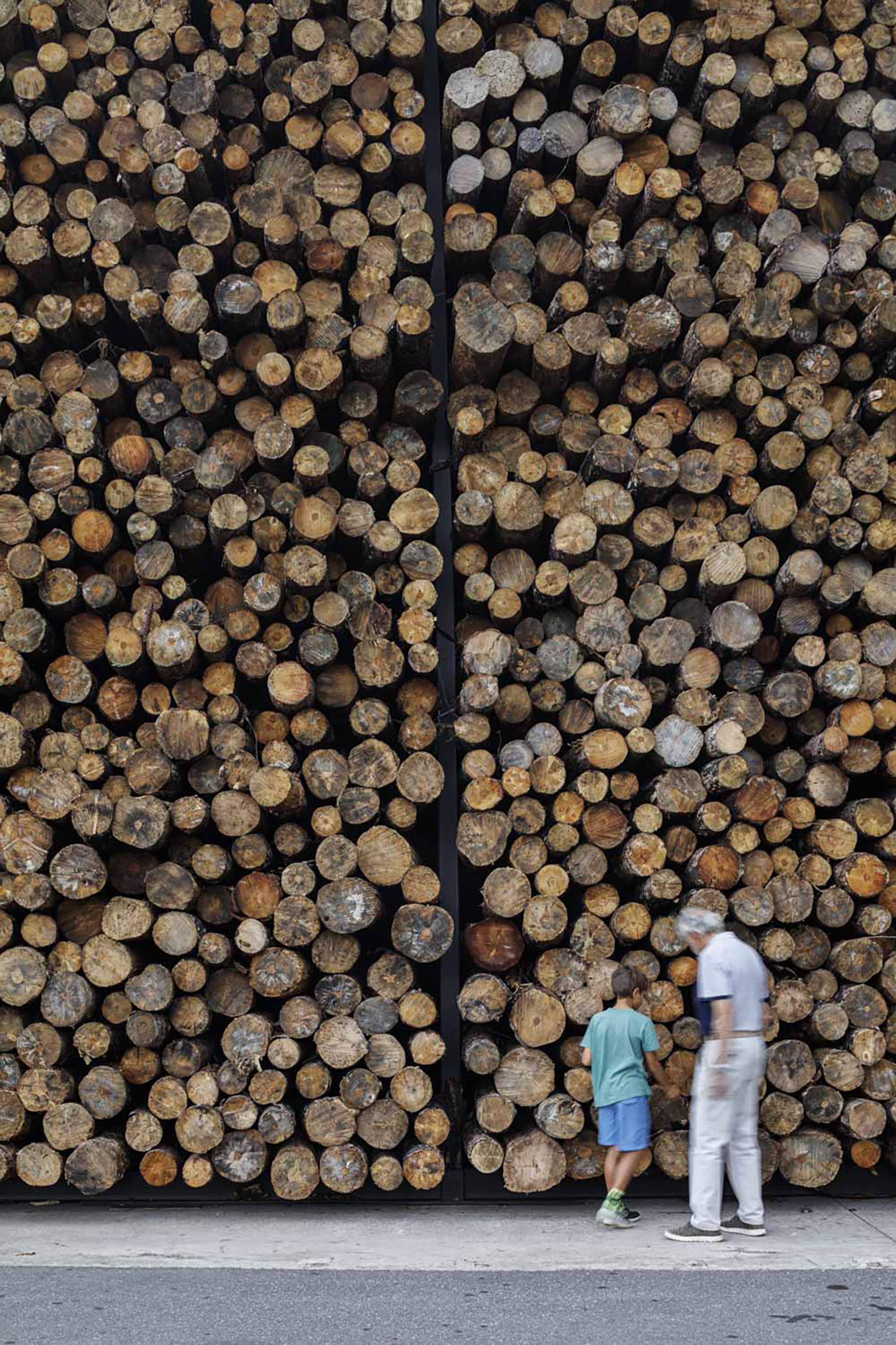
© Adrià Goula
The construction process was equally relevant. For a week, people from San Sebastián witnessed a brutal performance in which twenty long forestry trucks arrived transporting a large volume of trees that was unloaded with a forestry clamp and raised on a steel containment structure whose main purpose was to frame the process. Ash, cortex and branches came off the logs, polluting and contaminating the site so often transited daily. People could smell and touch the burned wood. The small forest fragment was also a refuge for other living beings of different species such as birds, butterflies and other insects.
We, as architects, dealt with a living material, which we have learned to consider more as a subject with its natural and inaccurate behavior, and which has been very complex to work with. Each log had its own shape and dimension and the final result was a dialogue between two systems: the stacking of logs with their own physical conditions and difficult assembly, and the structure that framed, gave order and contained this great volume that didn´t belong to this context. We tried to explore this limit with a very direct, experimental response that was also tested on site but that was made to impact through its entire process of creation and disappearance. We wanted to establish a message of awareness and concern with this reality and to endure in people´s memories.

© Mikel Blasco
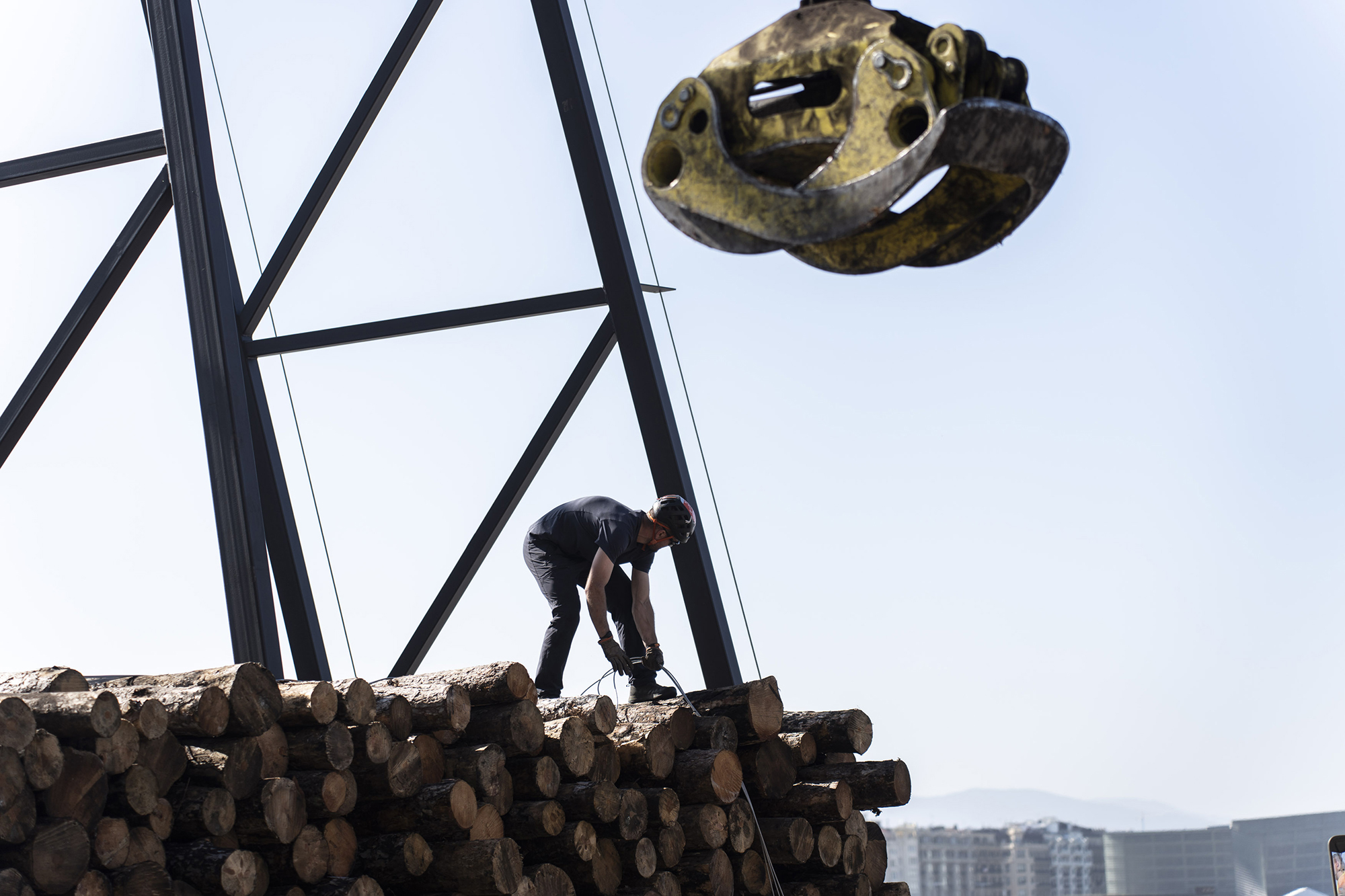
© Mikel Blasco
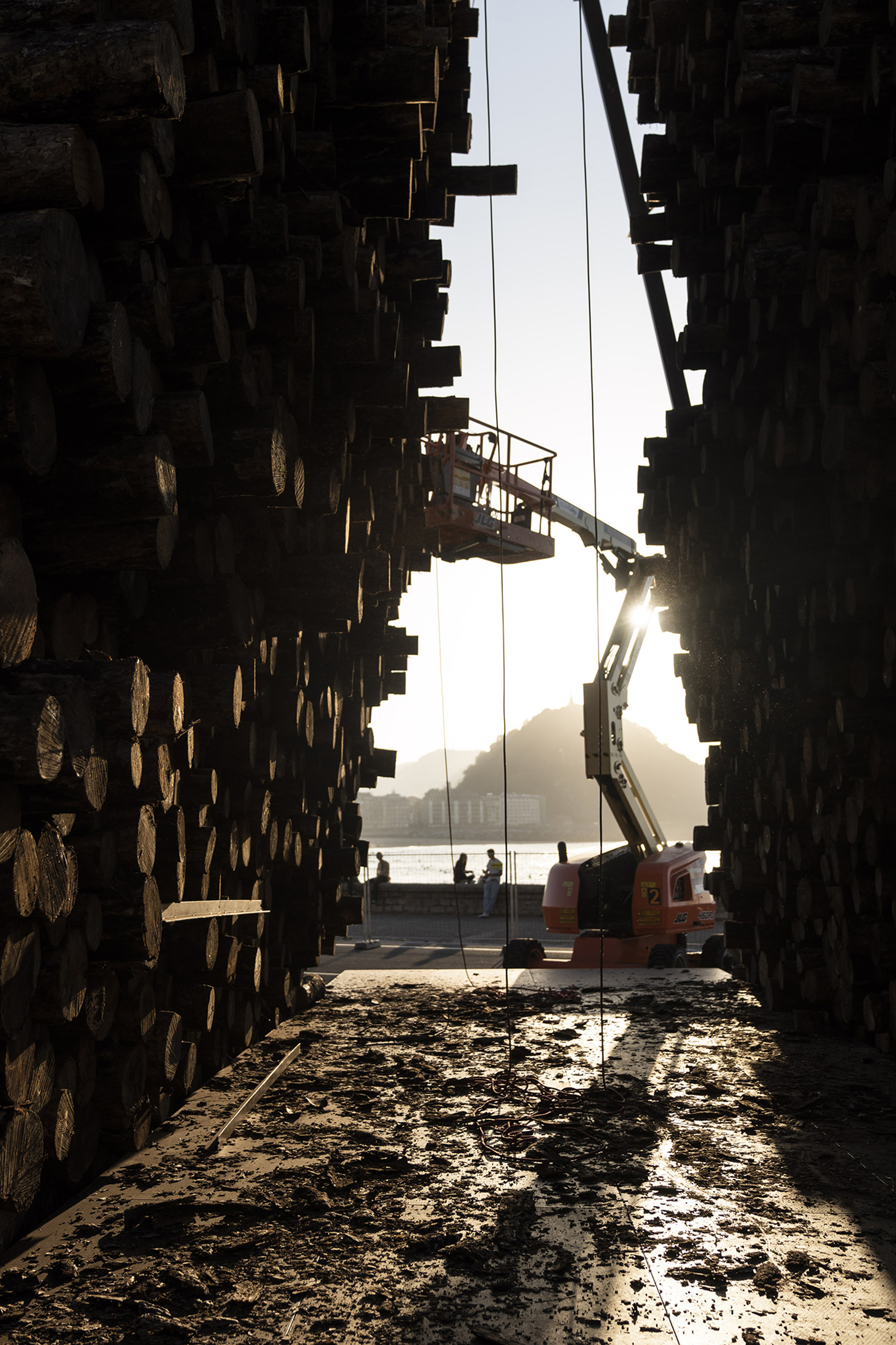
© Mikel Blasco
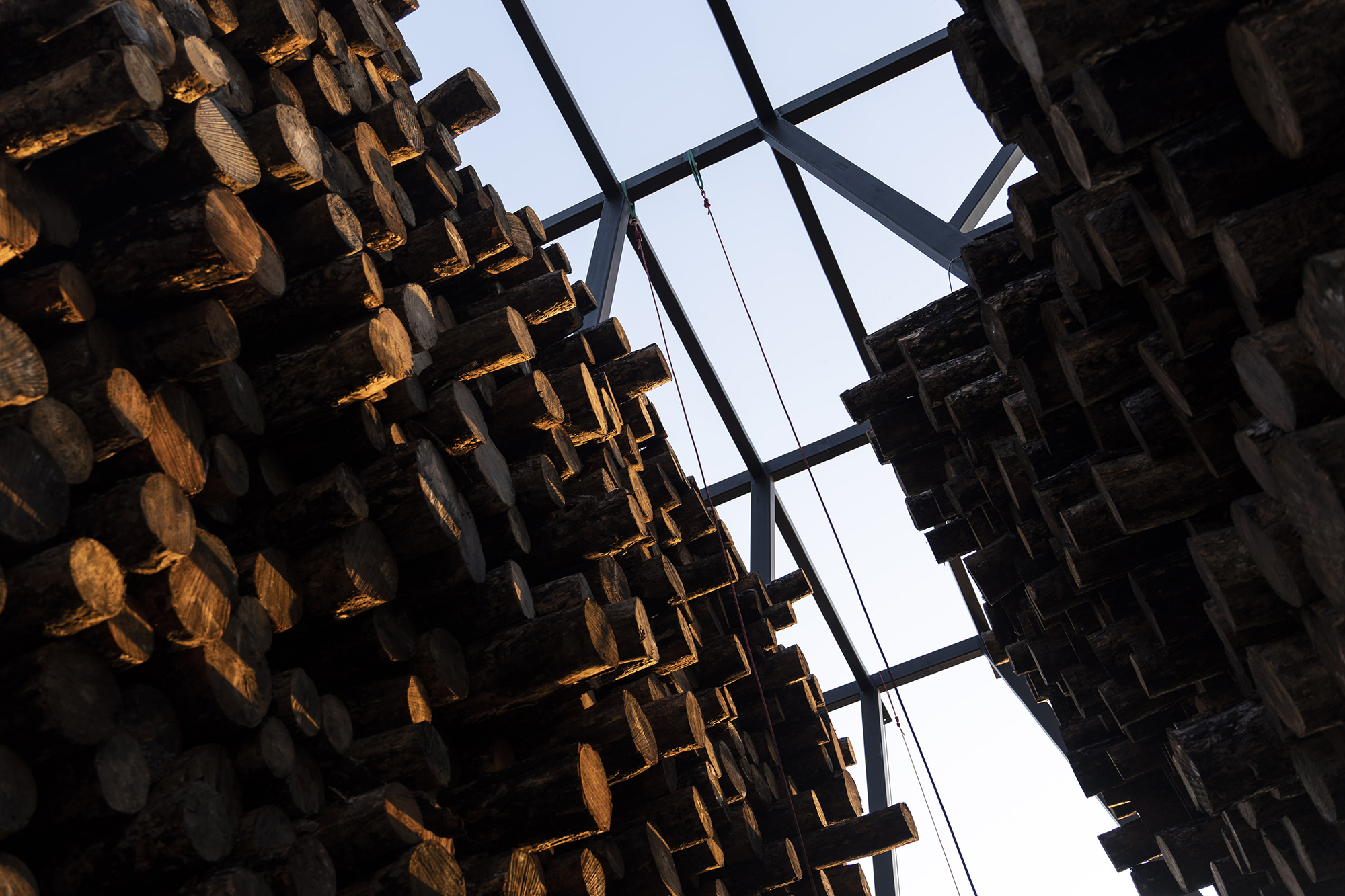
© Mikel Blasco



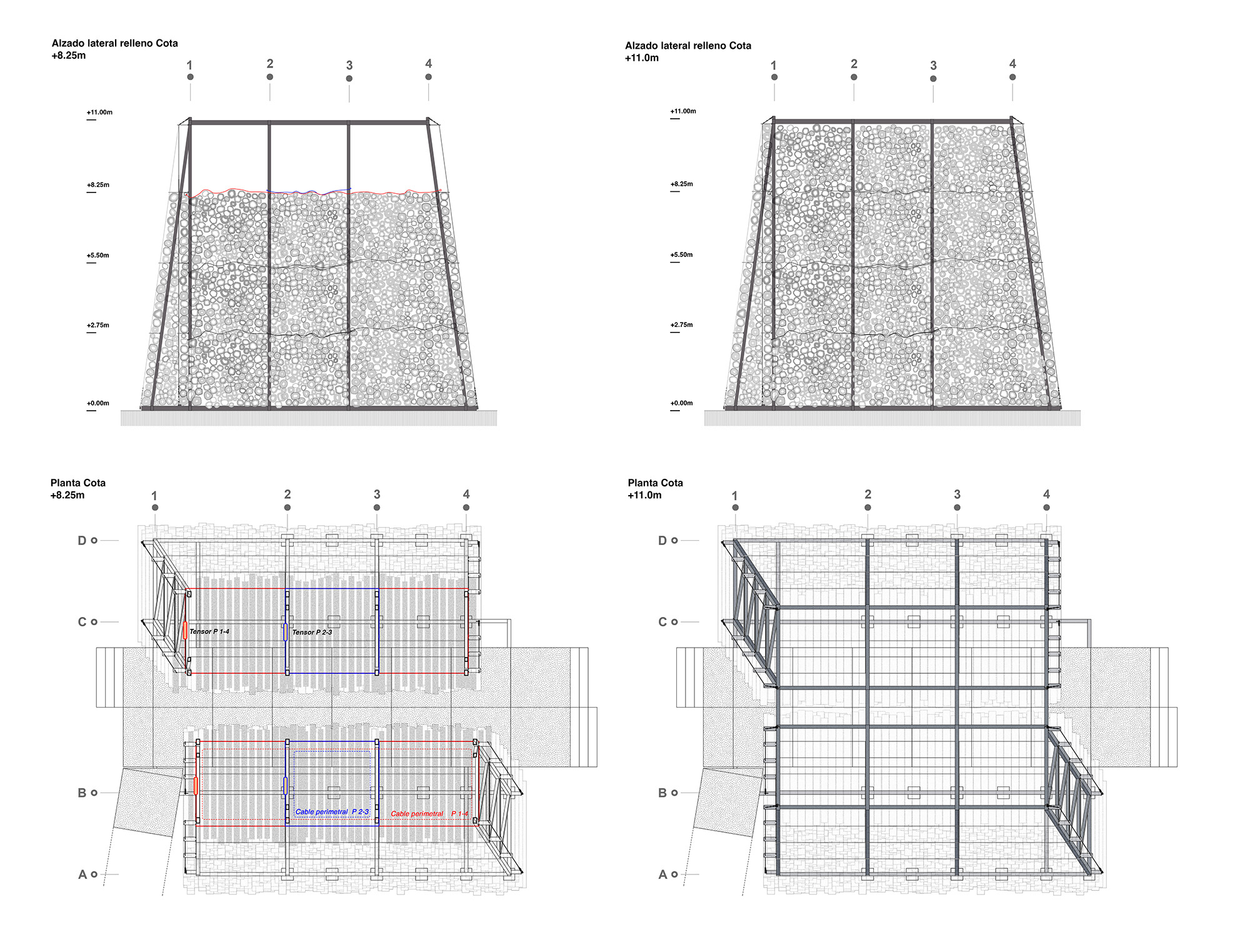
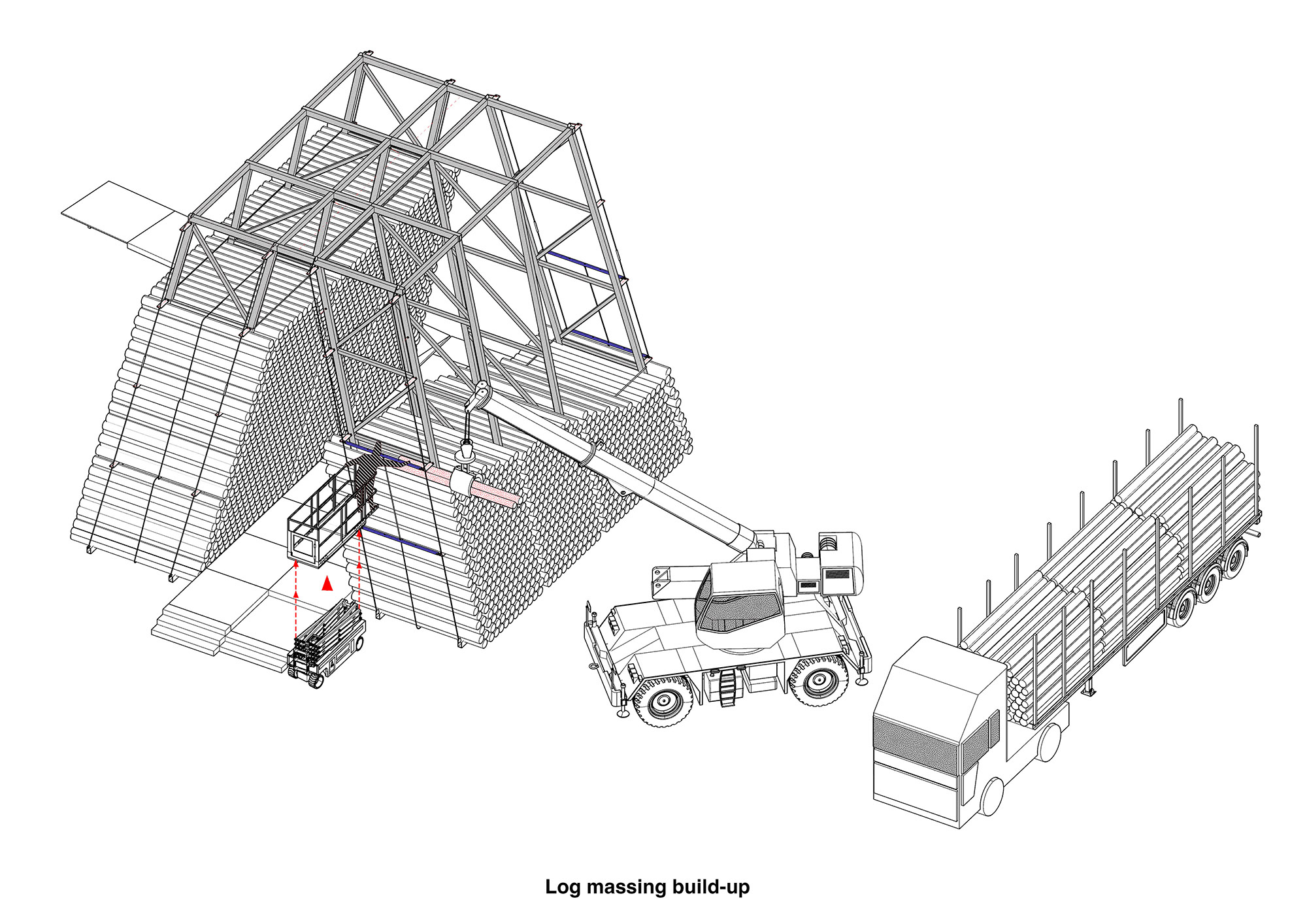

Lost Forest was the winning project of second edition´s urban architecture festival TAC! which took place this past year in the city of San Sebastian. It was also built within the Basque Country International Architecture Biennial MUGAK. It was built in October 2023 and dismantled at the end of November 2023.




